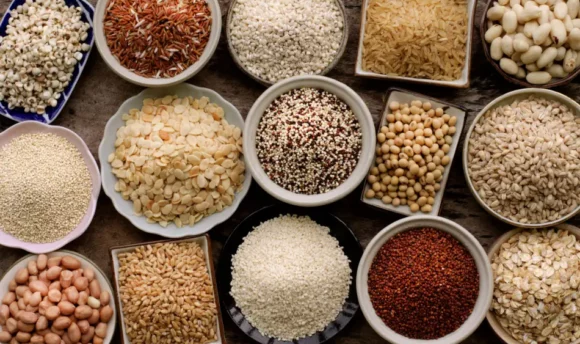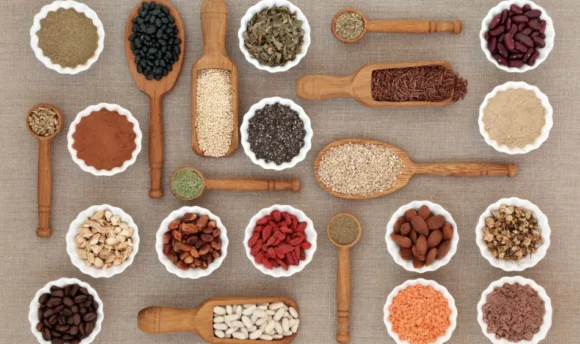Is Pumpernickel Bread Healthy? Nutrition, Calories, and Ingredients
When it comes to bread, there are many options available for us to make a selection. Pumpernickel is a type of rye bread that actually holds tons of nutritional benefits. In today’s article, we will be looking at the nutritional value of a serving size of pumpernickel. Is it really safe to add it to our diets?

Pumpernickel bread is an old-world type, dark brown bread that originated from the Westphalia area of Germany in the mid-1400s. The name pumpernickel actually means “hard to digest,” and this is mainly because of how dense the bread is.
While less traditional pumpernickel bread uses different ingredients, the ingredients used in creating the traditional masterpiece account for its distinct dark color, sweet taste, long baking time, and unique nutritional value.
Today, we have taken the mantle from the baker and decided to bring this product to the table and see if it holds true to its stories.
How does consuming pumpernickel bread stack up with white bread, sourdough, and rye bread? What are its health benefits, and why is it such a great option?
Let’s get straight into it.
Is Pumpernickel Bread Healthy?
Yes, pumpernickel bread is a healthy option for everybody as opposed to the common white bread. This whole-grain bread variety pairs well with hearty foods like smoked salmon and aged cheeses.
Pumpernickel bread contains a significant amount of dietary fiber, lignans, essential vitamins, and minerals. This makes it a powerhouse of health benefits such as sustained blood sugar levels, lowered breast cancer risk, and constipation relief.
How Is Pumpernickel Bread Made?
Traditional pumpernickel bread is made using a combination of coarse rye flour, whole-wheat flour, and rye grains. The coarsely ground rye flour used is obtained by grinding rye berries into what bakers call a ”meal.”
The baking process involved in making pumpernickel calls for low temperature and is inherently slow, typically lasting up to 24 hours. The process also calls for the use of a slowly fermented sourdough starter as opposed to instant yeast used in other types of bread.
On the other hand, wheat flour, instant yeast, flavoring agents, and other additives go into making American pumpernickel bread – yes, there are two versions: American and German pumpernickel bread.
The baking process is also quite faster as they do it at a higher temperature.
What Ingredients Does Pumpernickel Bread Contain?
Authentic pumpernickel bread is essentially pure rye bread, meaning that its main constituent is going to be coarsely ground rye flour. The rye flour is what gives it its rich chocolate color and robust flavor, while also contributing to its density.
Aside from the pumpernickel flour, other ingredients found in pumpernickel include:
- Whole rye berries
- Acidic sourdough starter
- Wheat flour
- Dry roasted sunflower seeds (unsalted)
- Cracked rye kernels
- Salt
The sourdough starter used in making them is responsible for the slightly tangy taste, which happens to be a distinct feature of these breads. It also contributes to the overall health benefits of pumpernickel bread.
Nutrition Facts
At this point, we have talked a lot about how you need to include pumpernickel in your daily diet. Through all the bits and pieces that come together in making this bread, we are now more than aware of the benefits linked with it.
On a more even plane, the health benefits you get with whole-grain pumpernickel bread are more than those accompanying the more famous white bread. However, what lies in a slice of pumpernickel? What exactly is in these rye-based foods that makes them the perfect choice for you?
To answer this question, we shall be looking at pumpernickel bread nutrition data provided by the USDA.
Nutritional value per 100g
The nutritional value per 100g serving of pumpernickel bread is as shown in the table below.
| Calories/Nutrient | Amount |
| Calories (kcal) | 250 |
| Net Carbs (g) | 47.5 |
| Fiber (g) | 6.5 |
| Sugar (g) | 0.53 |
| Fats (Total) (g) | 3.1 |
| Protein (g) | 8.7 |
High in vitamins and minerals
As pumpernickel falls under the class of whole-grain foods, it contains a substantive amount of essential vitamins and minerals that cater to healthy living.
Pumpernickel contains the all-important B-complex vitamins in good amounts. This includes thiamin, riboflavin, niacin, pantothenic acid, and pyridoxine.
These vitamins stand as the building blocks to having a healthy body, seeing as they play vital roles in energy production, improved cognitive function, cellular metabolism, and reduced congenital disabilities.
These B vitamins are also essential in enhancing cardiovascular health, nerve function, eyesight, and digestion.
In terms of minerals, it contains selenium and manganese, which helps in tackling cell-destroying free radicals. Additionally, pumpernickel contains generous amounts of phosphorus, zinc, and copper, which are essential in building a strong skeletal system.
Low in protein
A 100g serving of pumpernickel provides about 8.7g of plant-based protein. For what it is worth, this number is on the low side. This, alongside other facts, makes it a great addition to a diet that requires small amounts of protein.
The protein content in pumpernickel makes it a good substitute for animal protein foods high in saturated fats.
Low in fats and calories
A single serving (100g) of pumpernickel bread has about 3.1g of fat and 250kcal. Compared to other highly consumed loaves of bread, these numbers are quite low. More importantly, the fat content present is predominantly heart-healthy monounsaturated and polyunsaturated fatty acids.
In tandem, both elements being in low amounts are prerequisites for weight loss; you can eat them and not worry about disrupting your calorie deficit.
High in carbs
To a large extent, loaves of bread found in bakeries in today’s era typically possess high carb contents. Generally, 100g of pumpernickel bread has 47.5g of net carbs. Naturally, this doesn’t look nice when taken as it is, but a deeper look unveils a different story.
Out of the total carb content of pumpernickel bread, 6.5g is dietary fiber, and less than one gram is sugar. The rest of the carbs are actually starch.
Additionally, pumpernickel bread and other rye products generally have a low glycemic index. Therefore, when evaluating its impact on blood sugar levels, the glycemic load and serving size must be directly proportional.
FAQs
Here, we answer some frequently asked questions about pumpernickel bread.
Yes, pumpernickel bread has gluten, which comes from the rye flour used in the baking process. As such, those with celiac disease need to avoid eating pumpernickel.
Pumpernickel bread is a perfect example of whole-grain bread.
A Word From Our Nutritionist
It is no secret that whole-grain loaves of bread like pumpernickel and rye are the best option for these baked goods. They contain fewer harmful ingredients than regular white bread, making any dietary inclusion relatively easy.
Nonetheless, you can never be too careful with these products, especially when buying them from your local shop. Store-bought bread can come with ingredients that may not fall into your dietary requirements; hence, cross-referencing the nutrition label is of utmost importance.
True pumpernickel bread contains no more than the traditional ingredients, which accounts for them being classed as whole grains and part of the low glycemic food group.
Conclusion
Pumpernickel is an excellent option alongside rye bread and whole wheat bread. Unlike white bread, such as the famed Ezekiel bread, which possesses many unwanted nutrients, the health benefits of pumpernickel bread are too significant to overlook.
A couple of slices of pumpernickel, and you are good to go in terms of heart health, weight loss, and a host of other factors. Aside from these health benefits, there are many ways to enjoy pumpernickel.
For example, you can pair it with sliced onion, aged cheese, cream cheese, pickles, and smoked salmon, and it tastes quite good. Similarly, you can use it to make fiber-rich bread pudding, amongst other things.
So, when you go on your next grocery shopping, be sure to drop that loaf of white bread and opt for the healthier, nutritious bran that is pumpernickel!

















































 Select your language:
Select your language: 








